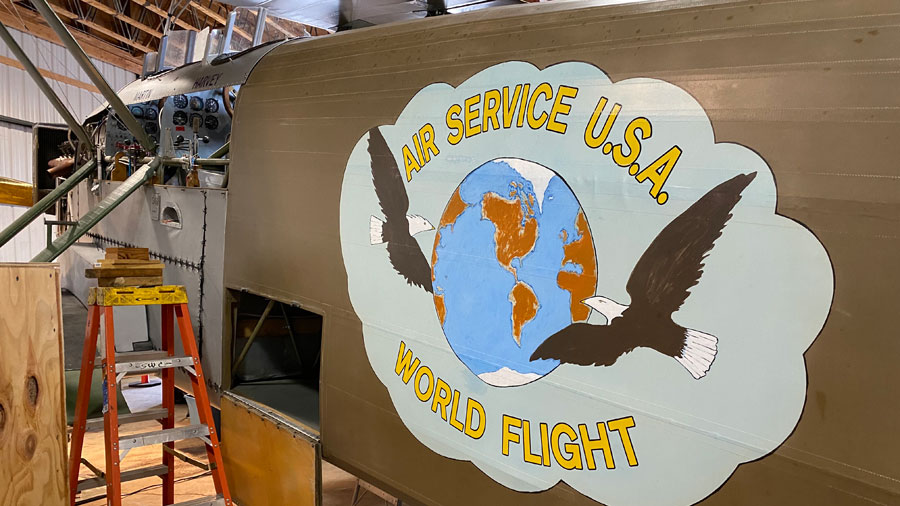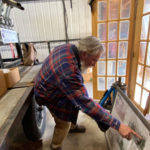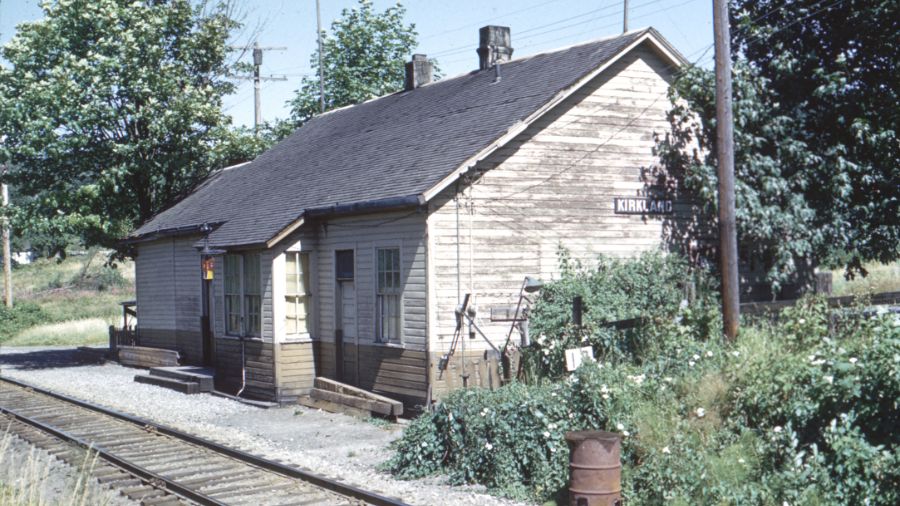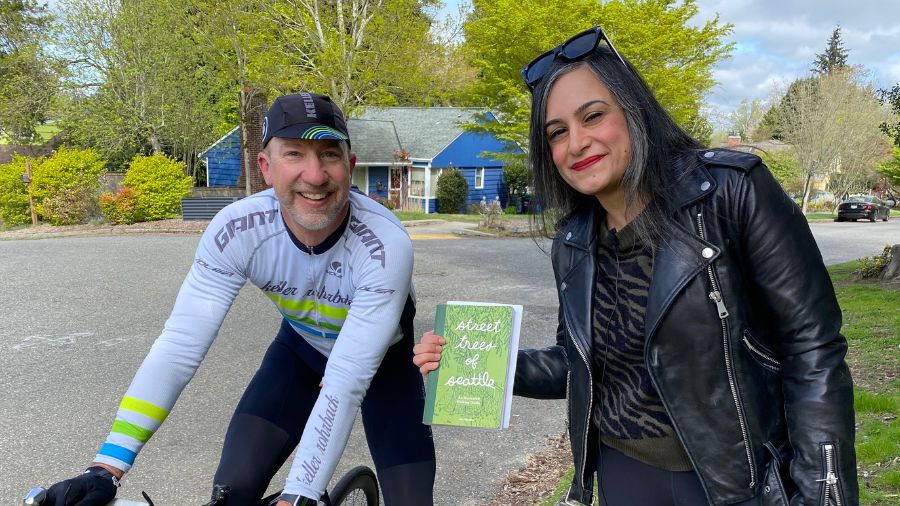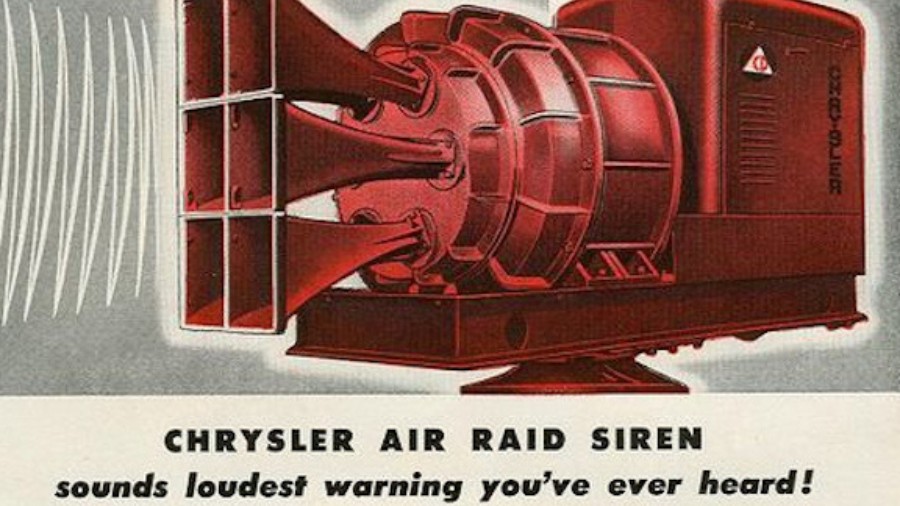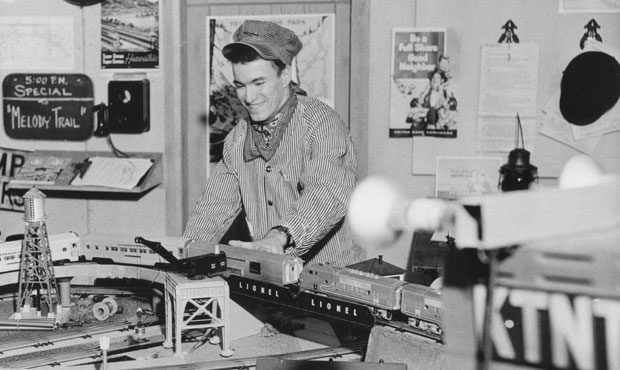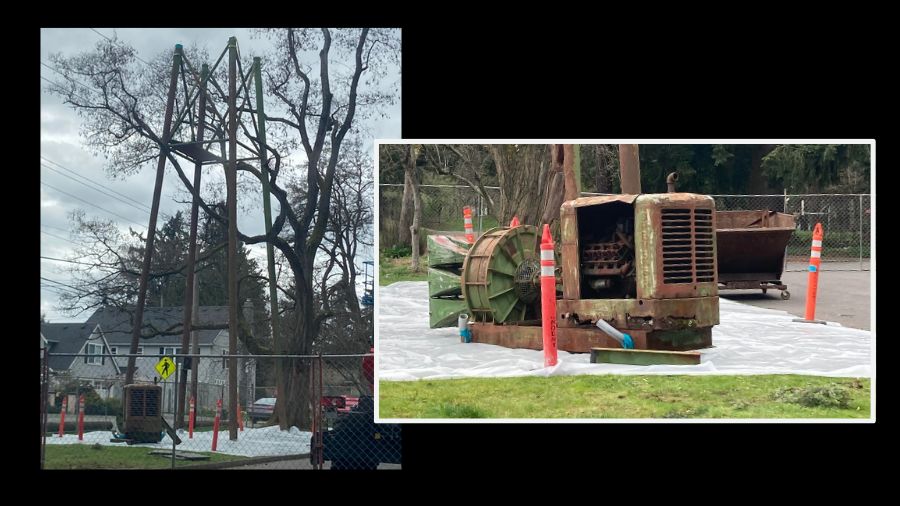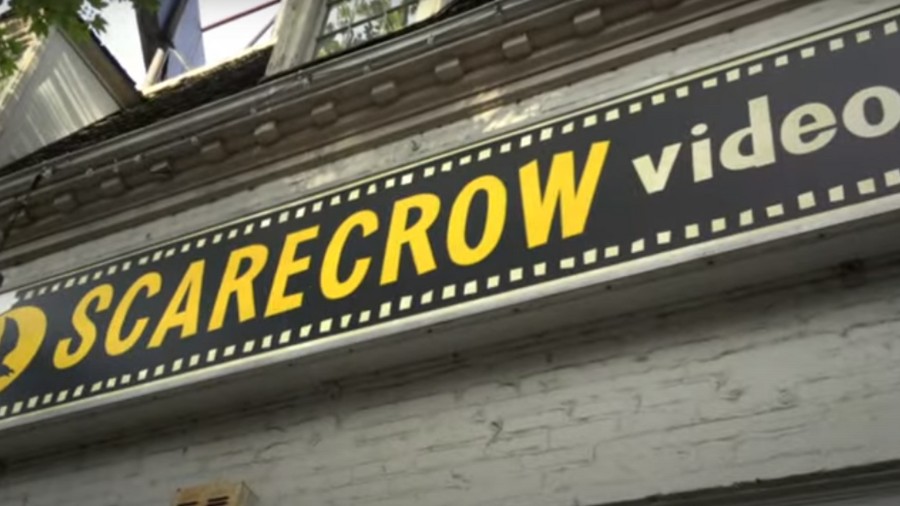Douglas World Cruiser replica will celebrate Seattle’s role in around-the-world flight
Apr 6, 2022, 9:47 AM | Updated: 12:12 pm
It was 98 years ago today when a quartet of U.S. Army biplanes took off from what’s now Magnuson Park on a first-of-its-kind “around the world flight.” To mark the 99th anniversary of this momentous occasion in 2023, a local man is planning a re-creation in a replica plane he built himself.
Many people have driven past a concrete and bronze monument that stands in front of the main entrance to Magnuson Park. It’s hard to get to on foot, but it’s worth the effort to see up close. The monument commemorates the U.S. Army’s 1924 around-the-world-flight that left from Sand Point – before it was Magnuson Park, even before it was a Naval Air Station – in the days when a very young Boeing Company was assembling aircraft there, using a runway and Lake Washington for takeoffs and landings.
Bob Dempster is 76 and lives in Centralia. Decades ago, he used to ride his bike right past that monument without giving it a second thought. His dad was a commercial pilot, and Bob also learned to fly.
Dempster first heard about the around the world flight when he was a kid putting together model airplanes with tiny gas-powered engines back in the 1950s. During a long career as a teacher and artist, he remained interested and involved in aviation, and active with the Experimental Aircraft Association in Oshkosh, Wisconsin. In the 1990s, Bob and his wife Diane flew a modern small plane around the world, which is no small feat, and also set a few domestic flight records closer to home. Somehow or other, maybe through a kind of alchemy or kismet, all the facts and experiences of Bob and Diane’s aviation activities coalesced into a bigger and more historic quest beginning around 2000.
Though “quest” isn’t a word Bob Dempster would use.
“It just started out as a pretty good idea, and you know how things get out of hand,” Dempster told KIRO Newsradio, his eyes twinkling, and his deeply wrinkled face forming a beaming smile as he stood in a hangar at the Chehalis-Centralia Airport earlier this week.
“And so, 22 years later, here we are,” he continued, with a slight chuckle. “The idea was to build a reproduction of the Douglas World Cruiser, the first airplane fly around the world in 1924 from Seattle. And so, we’ve built a reproduction of the command ship which was the ‘Seattle.’ They had four airplanes … the ‘Seattle,’ the ‘Chicago,’ the ‘Boston,’ and the ‘New Orleans,’ and they were christened at Sand Point.”
Those four Douglas World Cruisers, as their name indicates, were not made by local favorite Boeing. They were instead designed and built in Santa Monica, California by Donald Douglas’s young company – the same one which Boeing would later compete with in the airliner business, and would eventually take over in the 1990s. But back in the 1920s, Boeing engineers at Sand Point helped get the Douglas planes ready for the flight. If there was competition, it was friendly, because there was industry-wide support for the Army’s effort, and both Bill Boeing and Donald Douglas were personally involved. The flight took off on April 6, 1924, and the four planes headed north to Prince Rupert, British Columbia.
Fast forward to the 21st century, and Bob and Diane – and dozens of volunteers and talented engineers with specialized skills – founded a nonprofit organization, and finished building a replica Douglas World Cruiser called “Seattle II.” It’s outfitted with an original V-12 Liberty engine, and is almost a note-for-note hand-built replica of a vintage plane – along with some modern safety equipment, a tail wheel rather than just a skid, and modern non-flammable fabric covering its wings and fuselage.
The only visual difference between the original and the replica? There’s a “II” after the name “SEATTLE” on the engine cover, plus the words “THUNDER CANOE,” written in the Indigenous language Lushootseed and placed underneath “SEATTLE II.” This poetic nickname was bestowed on the plane by Chief Seattle descendant and Duwamish Tribe member Ken Workman at a ceremony at Boeing Field.
The plane, which currently is stored in a hangar in Centralia, first flew about a decade ago, and initially underwent about 40 hours of test flights with an official test pilot in order to be certified for regular flight. It was a few years later when “Seattle II” had its formal debut back in 2016 during the Boeing Centennial, when Diane Dempster rode along with the test pilot when they circled the Space Needle.
“It was like two icons meeting, you know,” Diane Dempster said, recalling that memorable flight around the symbol of the 1962 World’s Fair that’s since become synonymous with Seattle itself. “I was thinking when we were going around, ‘I wonder what the people in the Space Needle are thinking, are they going to the window or are they running away from the window?,’ because here’s this strange airplane circling them.”
The Douglas World Cruiser may indeed look a little strange now, but it was cutting-edge aviation technology when it was originally designed as a torpedo bomber during World War I.
The Dempster’s replica biplane, Bob says, represents about a million dollars in time and materials. It’s about 35 feet long with a 50-foot wingspan. Its cruising speed is about 72 miles an hour, and it typically flies just a few thousand feet off the ground. With its capacity to carry 450 gallons of aviation gas, depending on weather and other factors, that translates into roughly eight hours of flying time. The World Cruiser can be outfitted with floats for takeoff and landing on water, or with wheels for use on runways.
Like so many things, the Dempster’s hopes and dreams for the “Seattle II” were delayed by the pandemic. However, if all goes according to plan, the next big exciting part of the project will begin exactly one year from now.
“Next year on April 6 would be the ninety-ninth anniversary,” Bob Dempster said. “We’re shooting for leaving Seattle on floats, like the original flight. What they did was, they flew up to Alaska and around to Japan, and then Shanghai and around to Calcutta. And then they changed to the wheels [for flying] across India, the Middle East and to England.”
For the final leg of the 1924 flight, they reattached “floats again for the hop across the top to Boston, and wheels [for the flight] back to Seattle,” Dempster continued. “So that’s what we expect to do — the same flight.”
Well, not exactly the same flight of the original “Seattle,” let’s hope, because – spoiler alert – that particular Douglas World Cruiser crashed early in the trip, in late April 1924, in the Aleutian Islands in Alaska. The pilot, Major Frederick L. Martin, and the mechanic, Sergeant Alva Harvey, survived, but the plane was destroyed far out in the wilderness, and it took the two men 10 days of extreme cold and other challenges to hike back to a settlement. The journey to safety of the two men – and Martin’s later U.S. Army assignment in charge of air defense of Hawaii prior to the attack on Pearl Harbor – are separate stories on their own worthy of further study.
That episode in the Aleutians was just one of many twists and turns in the 1924 flight which was covered by famous journalist Lowell Thomas and then thoroughly documented in a book published in 1925. Only the “Chicago” and the “New Orleans” made it back to Sand Point in September 1924; the “Boston” was lost at sea and sank in the Atlantic Ocean; however, both crewmembers were rescued.
Decades after the flight, Thomas’s son, also named Lowell, settled in Alaska in the 1950s and ultimately became Lieutenant Governor. In 1967, the younger Thomas and Bob Reeve, a towering figure in Alaska aviation history, led an expedition to the Aleutians to recover the wreckage of the lost plane.
“And he recovered the steering wheel, which he gave to his father as a memento because he was so involved with all the pilots in the original flight,” Dempster said. “And later on, I met with Lowell and told him what I was doing, and he gave me the original steering wheel.”
“So when we fly around the world, I will have my hands on the original steering wheel for the Seattle,” Dempster said, clearly deeply moved by Thomas’ gesture as well as the tangible historic connection between “Seattle” and “Seattle II.”
“So I’ve got some DNA that’s going with us on that flight,” Dempster continued. “So yeah, it’s kind of like picking up the fumble, the football, and running with it. Yeah, I’m exaggerating a little bit,” he said, his emotion transforming into a deep and raucous laugh.
For anyone who pays attention to history, it’s clear that artifacts – like that original steering wheel – can be very powerful. The same can be said about certain places, too.
Bob Dempster knows the power of both. He visited the Alaska crash site himself, dodging bears and struggling to get up and over the same difficult terrain that Major Martin and Sergeant Harvey faced in their survival effort 98 years ago. In fact, Dempster could see in the tundra where the original “Seattle” made a big long scraping mark when it hit. At the time of Dempster’s visit more than 80 years later, the land hadn’t healed.
While Dempster was at the crash site, he knelt down and felt something sharp touch his knee. He dug into the tundra and pulled out a metal piece from the “Seattle” he immediately recognized as the “throttle quadrant” – a critical mechanism that would’ve been used by the pilot Frederick Martin throughout every flight.
“That’s what I was holding in my hand,” Dempster said, again, clearly emotional about the original World Cruiser and its two-man crew. “It’s still … it’s still an emotional moment to be able to, you know, have that my hand.”
Personal feelings aside, why attempt an around-the-world flight in 2023 in a plane designed more than a century ago? The reasons are similar, Bob Dempster says, to what U.S. Army General Mason M. Patrick – the man in charge of the original flight – said the reasons were a hundred years ago.
“Since the United States was the first to fly” thanks to the Wright Brothers in 1903, Dempster said, paraphrasing General Patrick, “we should be the first fly around the world.”
“So there’s a little nationalism [and] Manifest Destiny going on there,” Dempster said. “But I think it really illustrated the idea that man is kind of a restless beast, and he wants to know what is over the horizon. That’s not just a dreaming goal. That is what we do. That’s why we go to Mars and everything else.”
“We’re explorers by nature,” he added.
And that’s certainly true of Bob and Diane Dempster – who, because they also appreciate aviation history, will see to it that the “SEATTLE II” will ultimately find a ‘forever-home’ at Seattle’s Museum of Flight.
For the planned 2023 around-the-world flight, Bob will serve as pilot, and a co-pilot/flight engineer will join him as part of a two-person crew. Diane will remain in the Seattle area and assist with support and logistics, such as shipping – to wherever it might be needed – a backup engine that the two have already prepped for service.
The estimated cost of the 2023 flight has risen because of increases in fuel and oil prices. Bob Dempster says the total budget will like be somewhere around $450,000. The Seattle World Cruiser Association welcomes tax-deductible contributions via their website.
You can hear Feliks every Wednesday and Friday morning on Seattle’s Morning News, read more from him here, and subscribe to The Resident Historian Podcast here. If you have a story idea or a question about Northwest history, please email Feliks here.

